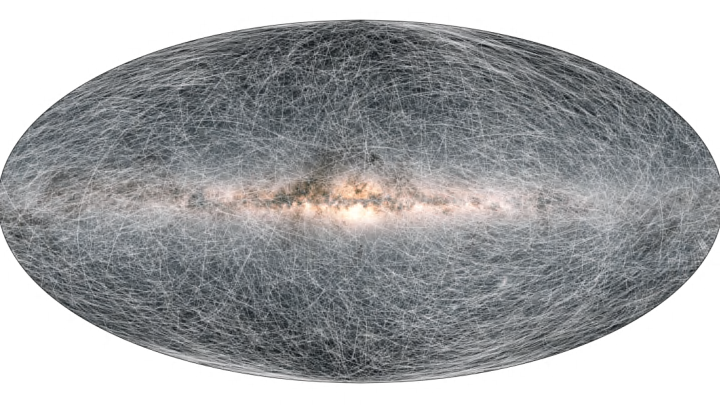It's our galactic home, but the Milky Way contains many mysteries scientists are working to unravel. Now, as The Guardian reports, astronomers at the European Space Agency have built a 3D map that provides the most detailed look at our galaxy yet.
The data displayed in the graphic below has been seven years in the making. In 2013, the ESA launched its Gaia observatory from Kourou in French Guiana. Since then, two high-powered telescopes aboard the spacecraft have been sweeping the skies, recording the locations, movements, and changes in brightness of more than a billion stars in the Milky Way and beyond.

Using Gaia's findings, astronomers put together a 3D map that allows scientists to study the galaxy in greater depth than ever before. The data has made it possible to measure the acceleration of the solar system. By comparing the solar system's movement to that of more remote celestial objects, researchers have determined that the solar system is slowly falling toward the center of the galaxy at an acceleration of 7 millimeters per second per year, The Guardian reports. Additionally, the map reveals how matter is distributed throughout the Milky Way. With this information, scientists should be able to get an estimate of the galaxy's mass.
Gaia's observations may also hold clues to the Milky Way's past and future. The data holds remnants of the 10-billion-year-old disc that made up the edge of the star system. By comparing it to the shape of the Milky Way today, astronomers have determined that the disc will continue to expand as new stars are created.
The Gaia observatory was launched with the mission of gathering an updated star census. The previous census was conducted in 1957, and Gaia's new data reaches four times farther and accounts for 100 times more stars.
[h/t The Guardian]
